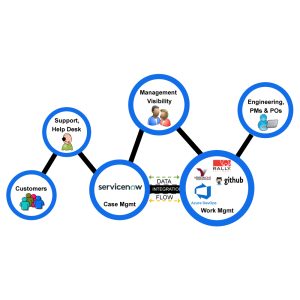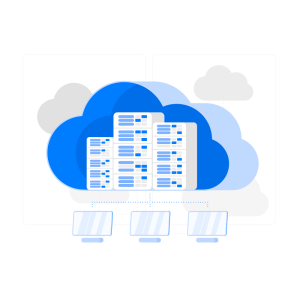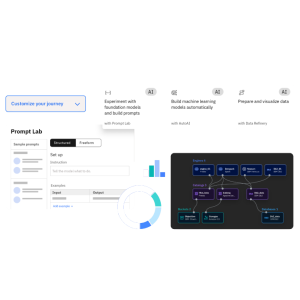In the modern enterprise, data is flowing from all directions: structured databases, unstructured voice inputs, real-time monitoring tools, and cloud-native apps. This data explosion presents new opportunities and challenges. Enterprises are no longer dealing with just volume, but also the complexity of governing, transforming, and deriving insights from this data in real time.
As organizations move towards hybrid cloud architectures and AI-driven applications, building secure, scalable, and intelligent data pipelines becomes a top priority. Data breaches, privacy regulations, and the growing demand for AI-driven decision-making have made it essential to reimagine how data is ingested, protected, and utilized.
This guide explores how companies can leverage IBM InfoSphere Optim and Watson Speech Services—combined with Watson Studio, Instana, Watson Knowledge Catalog, and Cloud Pak for Applications—to create robust pipelines that ensure data privacy, compliance, and AI-readiness.
We’ll walk through real-world scenarios, integration strategies, and architecture blueprints so your enterprise can unlock deeper insights without compromising security, governance, or speed.
What is a Secure Data Pipeline?
A secure data pipeline refers to the series of processes that collect, transfer, transform, and store data while enforcing privacy, access controls, audit trails, and regulatory compliance. It is the backbone of responsible data architecture, ensuring that sensitive data doesn’t leak, get misused, or become non-compliant during its lifecycle.
Key Pillars of Secure Data Pipelines:
- Data Anonymization and Masking: Protect sensitive data (like PII) by replacing it with pseudonyms or masked versions during dev and test. This ensures privacy is maintained across environments without sacrificing data structure.
- End-to-End Encryption (In-Transit & At-Rest): Encrypt data while it’s moving across the network and when stored. This defends against interception or unauthorized access to information at any point.
- Governance with Lineage and Access Control: Apply structured policies to control who accesses data, track changes, and audit every interaction across the pipeline lifecycle.
- Monitoring and Logging for Anomalies: Use observability tools to track behavior, flag unusual access patterns, and prevent downtime or data breaches in real-time.
- Policy Enforcement for Compliance (GDPR, HIPAA, etc.): Align data handling with global regulatory frameworks, automatically enforcing retention, consent, and audit trail requirements.
The Role of IBM InfoSphere Optim
IBM InfoSphere Optim is a best-in-class tool for data lifecycle management. It provides anonymization, archiving, and data masking across environments—making it a foundational component in securing enterprise data pipelines. By managing data from creation to retirement, Optim helps organizations enforce privacy, comply with regulations, and cut operational costs.
Key Capabilities:
- Data Masking: Protect sensitive information such as PII or financial records during development, testing, or external sharing. Optim replaces real data with realistic but fictitious data to reduce risk and uphold compliance.
- Archiving: Reduce storage costs by moving infrequently accessed data to long-term storage. Optim archives in a way that maintains easy retrieval for audits or business insights.
- Subsetting: Extract only the necessary slices of production data for use in dev/test environments. This reduces data exposure and improves system performance without compromising test quality.
- Application Retirement: Decommission outdated applications without deleting valuable data. Optim ensures historical information remains accessible for compliance and reporting.
Real-World Use Case:
A financial services firm uses IBM InfoSphere Optim to extract masked data subsets from production systems. These sanitized datasets are fed into Watson Studio for training machine learning models, ensuring compliance with GDPR and financial regulations without sacrificing analytical depth.
From Voice to Insight: IBM Watson Speech-to-Text and Text-to-Speech
Today, voice is a massive source of unstructured data. Customer support calls, healthcare dictations, legal transcripts—all carry valuable insights.
Enter IBM Watson Speech Services:
- IBM Watson Speech to Text converts real-time or recorded audio into written transcripts.
- IBM Watson Text to Speech enables systems to generate human-like audio responses from text, enabling voice-based UX.
How This Fits Into the Pipeline:
- Audio Ingestion: Voice recordings enter the pipeline.
- Watson Speech to Text: Transcripts are created with timestamped metadata.
- Watson Knowledge Catalog (WKC): Transcripts are tagged, classified, and governed.
- Watson Studio: NLP models process transcripts for sentiment, intent, or compliance cues.
- Optional Feedback Loop: Watson Text to Speech generates audio-based reports or customer responses.
Industries Benefiting from This:
- Healthcare: Convert doctor-patient recordings into EMR entries
- Banking: Monitor call-center conversations for compliance breaches
- Retail: Analyze voice-based product feedback at scale
Layering Governance with Watson Knowledge Catalog
A secure data pipeline isn’t complete without governance that understands the meaning and context of your data. This is where Watson Knowledge Catalog (WKC) becomes indispensable.
What WKC Does:
- Auto-tags Sensitive Data and Assigns Governance Rules: Automatically identifies PII, financial data, and confidential content, then applies relevant policies.
This reduces manual effort while ensuring regulatory compliance from ingestion to output. - Tracks Data Lineage and User Activity: Monitors how data moves, transforms, and who accessed it.
Provides an auditable trail for internal governance and external compliance requirements. - Applies Policy-Based Access Control: Enforces role-based permissions and access rules.
Ensures only authorized users can interact with sensitive datasets under predefined policies. - Provides Cataloged Data Assets for Discovery and AI Consumption: Organizes trusted data into searchable, reusable assets.
Enables data scientists and business analysts to easily find and use governed, quality data.
Combined with InfoSphere Optim:
- InfoSphere Optim Anonymizes or Archives Data: Cleans and prepares sensitive or aged data before it enters AI workflows.
Maintains compliance without compromising performance or value. - WKC Classifies and Secures It for Analytics or Sharing: Adds metadata, access controls, and discovery features to the protected data.
This ensures only trusted, secure data assets are passed into downstream pipelines.
Monitoring Data Flows with Instana
Every pipeline needs real-time observability to detect latency, breaches, or bottlenecks. Instana, IBM’s enterprise-grade observability platform, delivers full-stack monitoring across hybrid and multi-cloud environments.
What Instana Enables:
- Automated Discovery of Microservices and Apps: Continuously maps your dynamic environments as services are deployed or scaled.
This enables zero-configuration monitoring, ensuring no component goes unnoticed. - Real-Time Visualization of Pipeline Components and APIs: Displays live service maps and pipeline flows in real time.
Teams can quickly detect where slowdowns, failures, or overloads are occurring. - Alerting for Anomalies in Data Flow or Infrastructure: Flags spikes in latency, data loss, or broken services with context-rich alerts.
This helps accelerate incident resolution by pointing to root causes instantly. - Contextual Traces Across Hybrid and Multicloud Environments: Tracks transactions end-to-end across containers, VMs, and cloud stacks.
This provides a unified view of system behavior across the entire data journey.
How It Strengthens Your Pipeline:
- 360-Degree Pipeline Visibility: By integrating Instana with Cloud Pak platforms, teams gain full visibility into app, data, and API flows.
This reduces blind spots, improves uptime, and strengthens data integrity. - Proactive Troubleshooting: Detect issues before they affect SLAs using anomaly detection and predictive insights.
This minimizes disruptions and supports high-availability data delivery. - Performance Optimization: Identify underutilized resources or over-provisioned components.
Helps tune systems for better efficiency and cost control.
Watson Studio: AI Model Training with Secure Data
Once you’ve secured and governed your data, the final step is modeling insights—that’s where IBM Watson Studio comes in. It provides a robust platform for collaborative, scalable, and secure AI development.
Benefits for AI-Driven Pipelines:
- Drag-and-Drop or Code-Based Data Science Workflows: Whether you’re a business analyst or a data scientist, you can build models visually or with code.
This flexibility supports team collaboration and wider adoption of AI tools. - Use Secured Data from WKC or Optim Directly in Models: Seamlessly access governed, masked, or classified datasets.
Ensures your models stay compliant with data privacy and governance policies. - Built-in AutoAI for Rapid Experimentation: AutoAI automates feature engineering, model selection, and hyperparameter tuning.
This speeds up model development and ensures consistently high accuracy. - Full Integration with Jupyter Notebooks, SPSS, and Python/R Libraries: Work with familiar tools in a cloud-native, scalable platform.
Enables advanced analytics, real-time experimentation, and reproducible results.
Integrating with Cloud Pak for Applications
Your data and AI pipelines must connect with your application stack. That’s where Cloud Pak for Applications becomes essential. It provides a scalable, container-based platform that bridges development, data, and AI workflows securely and efficiently.
What It Provides:
- Containerization and DevOps Pipelines for Hybrid Cloud: Offers robust Kubernetes-based containerization with integrated CI/CD.
Allows seamless movement of applications across on-prem and cloud with operational consistency. - Seamless Integration with API-Driven Services (Watson, Optim, Instana): Native support for IBM’s AI, observability, and data governance tools.
Ensures your applications can plug into the pipeline without extra custom development. - Enhanced Security for Microservices and CI/CD Workflows: Provides fine-grained access controls, encryption, and compliance support.
Protects your services during both runtime and deployment, across teams and environments.
Integration Blueprint:
- Input Layer: App Services Feed Real-Time Data to Pipeline
Application endpoints generate real-time user events or logs that trigger secure data ingestion.
These may include web apps, mobile platforms, or backend services. - InfoSphere Optim: Ensures Compliance via Masking or Subsetting
Sensitive data is anonymized or subset before entering the analysis or modeling layers.
This ensures compliance and protects PII across the pipeline lifecycle. - Watson Speech-to-Text: Converts Any Voice Content
Audio files from call centers or voice forms are transcribed into structured, machine-readable text.
Enables NLP, tagging, and governance workflows downstream. - WKC + Watson Studio: AI-Ready, Governed Data Flows into Models
Transcripts and other structured data are classified and cataloged for AI model development.
Watson Studio accesses this curated data securely and directly from WKC. - Instana: Monitors the Health of This Entire Flow
Tracks every transaction, latency spike, and bottleneck across services in real-time.
Provides full-stack visibility, alerting, and automated root cause detection. - Cloud Pak for Applications: Runs the Orchestration in Containers
Executes each component in a containerized, modular architecture.
Supports dynamic scaling, security enforcement, and DevSecOps practices end to end.
Compliance-Ready Architecture: An End-to-End Stack
Here’s a high-level architecture you can adopt. Each layer is designed to ensure secure, governed, and scalable data processing aligned with AI-readiness.
Frontend (Input Sources):
- Apps, Forms, Mobile, Call Recordings: Serves as the intake layer for both structured and unstructured data.
Collects diverse inputs like form submissions, audio messages, or user interactions for processing downstream.
Security Layer:
- IBM InfoSphere Optim for Anonymization and Archiving: Masks or archives sensitive data at rest or in transit.
Ensures secure data handling and long-term storage compliance with minimal disruption. - IBM Guardium for DB Security (Optional Layer): Adds real-time monitoring and threat detection at the database level.
Logs access, prevents unauthorized activity, and enhances overall data protection.
Governance Layer:
- Watson Knowledge Catalog for Metadata, Classification, and Access: Auto-tags and classifies data assets across the pipeline.
Controls who can access what data, while maintaining lineage and regulatory tracking.
Speech Processing Layer:
- IBM Watson Speech-to-Text and Text-to-Speech: Converts audio to text for analysis and generates audio from text for user interaction.
Enables seamless voice data integration while maintaining governance policies.
Analytics & AI Layer:
- Watson Studio for Training and Deploying AI Models: Provides a collaborative space for developing, testing, and deploying machine learning models.
Supports AutoAI, Python/R scripting, and Jupyter for scalable experimentation.
Observability Layer:
- Instana for Tracing, Metrics, and Alerting: Continuously monitors services and transactions across the stack.
Provides real-time performance insights, root cause tracing, and intelligent alerts.
Orchestration Layer:
- Cloud Pak for Applications: Runs workloads in containers and automates DevOps processes.
Enables efficient orchestration of all pipeline components in hybrid and multi-cloud environments.
This layered architecture offers zero-trust governance, auditable workflows, and AI-ready data streams—ensuring security, visibility, and compliance from data entry to actionable insight.
Future-Proofing with IBM’s Ecosystem
IBM’s ecosystem of tools enables teams to build modular, scalable, and future-ready pipelines. These solutions are designed to grow with your business and adapt to shifting cloud strategies and AI innovations.
Key Advantages:
- Open-Source Friendly: Seamlessly supports open technologies like Kubernetes, Kafka, Python, and Jupyter.
This ensures developers can build and extend applications using familiar, interoperable tools. - Hybrid Cloud Compatible: Enables deployment across on-prem, public cloud, private cloud, and edge locations.
Offers flexibility for enterprises needing compliance control, latency reduction, or cloud cost optimization. - Interoperability: All IBM tools integrate natively within the Cloud Pak stack—spanning AI, automation, observability, and security.
Reduces integration friction, improves operational visibility, and speeds up time-to-insight. - Enterprise Security Compliance: Built to meet enterprise-grade compliance standards like SOC 2, ISO, GDPR, and HIPAA.
Trusted by Fortune 500 companies, IBM ensures secure digital transformation even in highly regulated industries.
Why Secure Pipelines Are a Business Imperative
In a world driven by AI and real-time data, secure data pipelines are the foundation of digital trust. They ensure that sensitive information is protected, governed, and delivered reliably—no matter the source, format, or destination.
Whether you’re building predictive models, responding to customer voice queries, or integrating multi-cloud environments, security and governance must be built into the pipeline, not added later.
By combining the power of:
- IBM InfoSphere Optim for Secure Data Lifecycle Management: Anonymizes, archives, and subsets data without exposing PII.
Protects information throughout its lifecycle—from ingestion to AI consumption. - IBM Watson Speech Services for Unstructured Voice Data: Transforms voice interactions into actionable insights.
Converts audio to text and vice versa while preserving compliance and accuracy. - Watson Knowledge Catalog for Governance: Classifies and secures data assets across the pipeline.
Tracks lineage, enforces access control, and ensures data is compliant and trusted. - Watson Studio for AI Modeling: Powers AI-driven decisions with secure, curated, and governed datasets.
Enables both rapid prototyping and enterprise-scale machine learning deployments. - Instana for Observability: Monitors the real-time health of services, APIs, and data flow.
Helps detect bottlenecks and anomalies before they impact performance or compliance. - Cloud Pak for Applications for Orchestration: Runs the entire stack in a containerized, DevOps-friendly environment.
Supports modular deployment, auto-scaling, and hybrid cloud readiness.
Together, these technologies form a resilient, compliant, and intelligent pipeline architecture. This positions your enterprise to lead in innovation while staying protected, performant, and future-ready.
Ready to Build Secure, AI-Ready Pipelines?
As an IBM Solution Partner, Nexright specializes in building intelligent, secure, and scalable data pipelines that bridge the gap between raw data and enterprise-ready AI. Whether you’re operating in healthcare, finance, retail, or telecom, we help you architect solutions that are customized to your industry, compliance requirements, and business goals.
We provide end-to-end services—from initial strategy and architecture design to tool integration, governance configuration, and performance optimization. Our team ensures your data flows are protected, governed, observable, and AI-ready using IBM’s trusted tools like Watson Studio, InfoSphere Optim, Watson Knowledge Catalog, Instana, and Cloud Pak for Applications.
Let Nexright be your partner in transforming legacy systems into modern, AI-powered ecosystems. We help organizations accelerate innovation, reduce operational risk, and turn data into competitive advantage.




